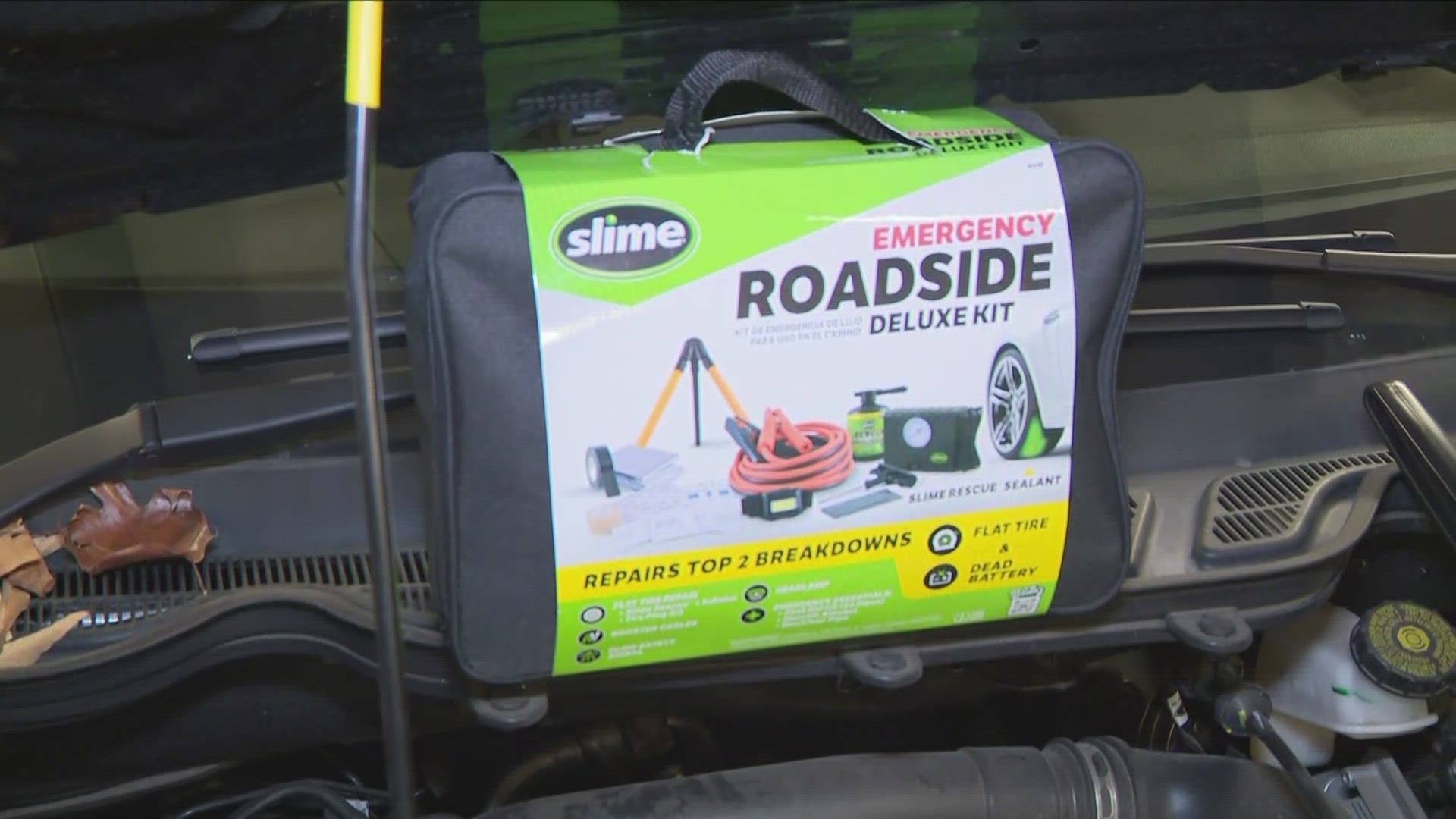STERLING, Va. — With temperatures dropping, it's time to prepare your car for winter weather.
Casey's Automotive owner Bryan Jewett shared tips based on the issues he sees coming into his shops most often.
One of them is tires.
Jewett said to make sure your tires are prepared for ice and snow, you'll want to check the tread depth. He recommends doing the penny test.
It's a simple process, where you stick a penny in the top of the tire, and if the tread covers most of Abe Lincoln's hair, the tire does not need to be replaced.
Jewett also suggested keeping an eye on tire pressure. Many cars have an indicator light that alerts drivers to low pressure, but they often don't say what the pressure should be.
Jewett pointed out that there's a sticker on the driver side door jamb that outlines the recommended psi.
"If we fill it to that level, this car is going to operate at the best possible for these conditions," he said.
Under the hood, Jewett said it's important to pay attention to your coolant and battery.
He said check that the fluid reaches the minimum fill line in the reservoir. However, he cautioned not to open the anti-freeze reservoir while the engine is hot.
A professional will have to tell you if the fluid is downgraded, though. He said that happens either after about five years or 50,000 miles.
When it comes to batteries, he said the cold does affect their functionality.
"Just like me, when I wake up in the morning on a cold, cold morning, I'm slow," Jewett said. "Your battery is going to be the same way. Cold weather really puts a stress on the battery and makes it hard for it to start the car."
When you’re just looking at the battery, he said pay attention to any corrosion you see. That’s an indication that it’s time to replace your battery.
Some other items Jewett recommends adding to your car during the winter months are:
- A portable charger for your car battery – just make sure you keep it charged as it sits in your car
- Windshield scraper
- A gallon of wiper fluid
- An emergency kit complete with jumper cables, emergency lights, etc.
- Extra windshield wipers
There’s one myth that AAA is busting this season: the idea that you should start your car a few minutes before you plan to drive to your destination to warm up the engine. That is false.
AAA said you should start the engine and only allow it to idle for the time it takes to fasten your seat belt. They also said that driving your car normally and avoiding hard acceleration helps to bring the engine to a warmer temperature faster and reduces wear and emissions.
RELATED: How to protect your home this winter

